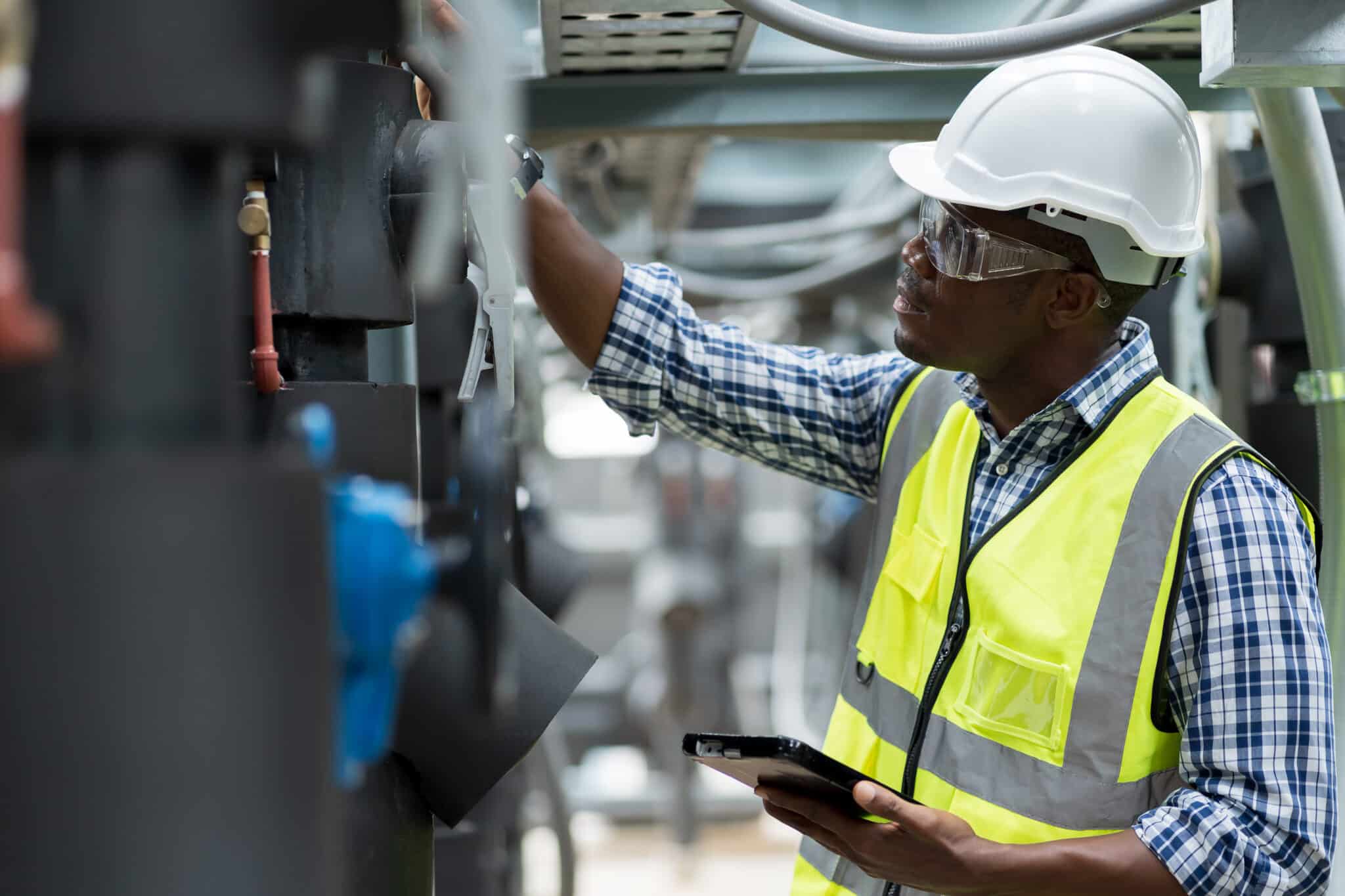
What is Machine Maintenance?
Machine maintenance encompasses all the work required to keep machines running successfully. This includes everything from minor maintenance for small machines all the way to major maintenance tasks on heavy-duty machinery.
The goal of machine maintenance is to prevent breakdowns and minimize downtime. Maintenance also prolongs the life of the machine by ensuring it is running optimally. Proper machine maintenance isn’t just about fixing things when they break; it is a strategic and proactive approach that contributes to the overall success, safety, and sustainability of businesses across diverse industries.
Machine Maintenance Examples
Maintenance of machines is critical across various industries to ensure smooth operations, prevent breakdowns, and maintain a safe working environment. Maintenance is important for any industry that relies on machines, but the types of machinery maintenance vary based on the machines and their purposes.
For example, in the industrial manufacturing industry, mechanical maintenance can include regular inspections, lubrication, and parts replacement to prevent unwanted downtime. It could also include equipment calibration to ensure precision, as well as cleaning and sanitation.
In the life sciences industry, machine maintenance can involve calibrating and validating laboratory equipment to ensure accuracy. It also includes adjusting any machines or equipment that control temperatures, air pressure, and humidity levels to make sure they are functioning correctly.
Another example is in the food and beverage industry, where maintenance includes sanitation and practices that ensure machines are producing quality products that meet requirements set by regulatory bodies such as the Food and Drug Administration.
Importance of Machine Maintenance
Even though there’s wide variation among machines and the maintenance they require, the purposes for machine maintenance are largely the same across industries:
- Increased efficiency: Well-maintained machines operate more efficiently, leading to higher productivity and lower energy consumption. They also produce more consistent products and create less waste.
- Cost savings: Regular maintenance can prevent costly breakdowns and extend the lifespan of equipment, reducing the need for frequent replacements. Unexpected downtime can be effectively reduced with regular machine maintenance. In the auto industry, downtime can cost up to $50,000 per minute, or $3 million per hour!
- Safety: Properly maintained machines are less likely to malfunction, reducing the risk of accidents and injuries in the workplace.
- Compliance: Many industries have regulations and standards that require equipment to be properly maintained to ensure safety and environmental compliance.
- Sustainability: Effective maintenance practices contribute to sustainability by minimizing waste, reducing energy consumption, and extending the life of valuable equipment assets.
- Planning and budgeting: When machine maintenance is performed regularly, organizations can budget for known repairs and downtime, avoiding unexpected expenses and interruptions.
Types of Machine Maintenance
There are many ways to plan and perform maintenance on machines.
Preventative maintenance involves scheduling regular maintenance, often based on the life of certain machine parts or historical data from the machine itself. A preventative maintenance schedule can ensure your business has the right parts at the right time. It also helps your organization prepare for the associated downtime as the machine undergoes regular maintenance to keep it running in top order.
Usage-based maintenance is a standard for certain types of machines or tools. It involves replacing certain parts or performing certain types of maintenance after a set amount of time in use or after manufacturing a set number of parts.
Predictive maintenance uses machine learning and other tools to catch issues before they fail or break down and require corrective maintenance. A predictive maintenance program uses vibration sensors, temperature monitoring, and more types of asset health and condition data to predict when machines or parts may fail. Predictive maintenance helps avoid unplanned maintenance and can save on costs and unexpected downtime.
Corrective maintenance, also known as reactive maintenance, can be the most costly type of maintenance. It involves waiting until a part or machine fails before addressing the issue. Waiting until failure can have unintended consequences, such as damaging additional machine parts or causing personnel injury in addition to the original problem.
How To Improve Machine Maintenance Practices
Industrial machine maintenance can be a daunting task, especially for companies with multiple locations and different types of machines. However, there are many tools that can simplify machine maintenance.
Using a machine maintenance log can help you track performance over time, making it easier to predict downtime and plan repairs. A computerized maintenance management software (CMMS) like eMaint can store all of this information, simplifying tracking and work orders, and use AI to analyze the data and create automated preventative maintenance schedule alerts.
Predictive maintenance tools integrate with a CMMS to track changes in vibrations, power usage, and temperatures, allowing you to take corrective measures before machine failure. Sensors allow staff to monitor machine conditions remotely and provide current and historical data, giving you the tools to make informed decisions about the best machine maintenance schedule for your business.
By adopting a CMMS, you’ll leverage data-driven insights to ensure your assets are maintained properly, protecting your investment in your machines while maximizing uptime.
